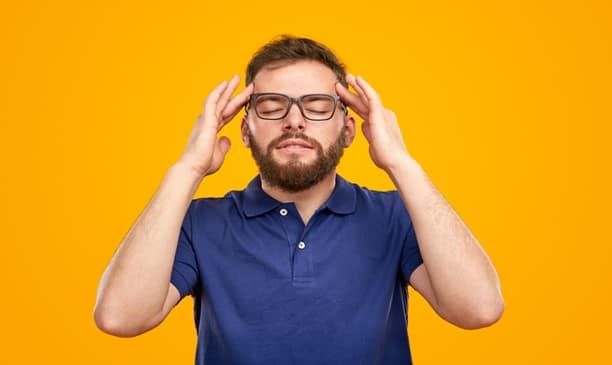Why does Increased Exercise Decrease Migraine?
Introduction to Migraine and Exercise
Migraine is a type of intense headache, this type of headache occurs in one part of the head. You may experience other symptoms during a migraine headache, such as nausea, vomiting, increased blood pressure, and blurred vision. According to our migraine doctor specialist in Mumbai at the Department of Restorative and Regenerative Medicine Jaslok Hospital, the intensity of a migraine headache can be moderate to severe, and it occurs as a sharp, tingling pain on one side of your head, the pain may last from a few hours to several days (4-72 hours). Unlike normal headaches, it is triggered with recurring frequency by certain factors, including lifestyle, diet, stress, unbalanced foods, changes in your environment, weather, as well as physical fatigue, or sleep-wake patterns. However, this problem can be relieved by understanding the triggers of migraines and taking proper prevention or adopting some changes in your lifestyle. In this episode, we will share the thoughts of migraine therapy doctors in Mumbai about the mechanisms behind exercise and migraine relief.
The Migraine-Exercise Connection
Migraine headaches can be caused by disorders of your nervous system, and irregularities in the blood vessels around the head or face. So in this sense too, there may be an important connection between migraine and exercise, but this connection may be different for each person. However, according to migraine therapy doctors in Mumbai, exercise and yoga techniques can generally help in reducing your muscle tension and altering the brain wave activity. Thus exercise can reduce the intensity and frequency of your migraines.
Exploring the Benefits of Exercise
When it comes to discovering the benefits of exercise with migraine, it is extremely important that one tailor exercise to one’s individual needs and seeks the advice of a neurologist for migraine in Mumbai. According to TMS treatment doctors for migraine in Mumbai, excessive or vigorous exercise can worsen migraines for some people, so it is important to get help in planning a safe and appropriate exercise. However, TMS treatment hospital for migraine in Mumbai confirms that unprecedented changes have been observed in the efficacy of transcranial magnetic stimulation on migraine in Mumbai when migraine sufferers undergo treatment with TMS for migraine in Mumbai using exercise as per individual needs.
In this he got some of the following main benefits.
- In reducing stress.
- In controlling blood pressure.
- in sleep quality,
- Increase in happiness (improves endorphin hormone production)
- to reduce headache
Mechanisms Behind Exercise and Migraine Relief
According to our experts at TMS Treatment Clinic for Migraine in Mumbai, Exercising can reduce migraine because exercise improves your physical activity and improves mental health, which can reduce the effect of some of the causes of migraine. Here are some reasons why exercise can reduce migraines:
- Reducing stress: Exercise improves blood circulation, which provides adequate energy and nutrition to the brain. Due to which the brain improves hormonal functions in your body. And this helps in reducing stress, which can be a major cause of a migraine.
- Generating endorphins: Exercising produces happy hormones like endorphins in the body, which can help reduce headaches.
- Getting sleep on time: Exercise can help your body get into the habit of sleeping on time, which can help you wake up naturally in the morning, and reduce the risk of migraines.
Release of Endorphins
Endorphin is a type of hormone that relieves stress or pain and produces a feeling of happiness and joy inside you. According to our migraine therapy doctors in Mumbai, most of the processes in your body are related to hormones, their proper secretion and exchange in the body keeps your health balanced. Especially in brain related issues. Proper secretion of endorphins in the body is important to improve your mood or relieve any type of pain. Our doctors at the best hospitals for TMS for Migraine in Mumbai confirm that in conditions like chronic migraine, exercise reduces the frequency of migraine attacks compared to before and this natural pain killer helps in reducing your pain and stress. And it can help in increasing physical efficiency. However, restorative medicine for migraine treatment in Mumbai may look at high-intensity exercise as a precipitating factor for migraine in some cases. Still, according to experts, doing aerobics, Tai Chi and yoga increases the amount of endorphins in your body, which can provide relief from physical or emotional pain or pain caused by stress.
Improved Blood Flow and Oxygenation
Generally, exercise increases the pumping capacity of the heart, which improves blood flow. This helps more oxygen and nutrition to circulate in the body. According to neurologist for migraine in Mumbai, exercise improves the health of blood vessels and improves cerebral vascular function, thereby providing more oxygen to the brain. This can reduce your chances of having a migraine attack in the same way that transcranial magnetic stimulation for migraine in Mumbai. This is why in addition to physical activities like walking, jogging, cycling or running, other exercises like cardio can significantly improve blood flow and oxygenation. Exercise not only improves your mental health and physical health, but it can also lead to feelings of peace and happiness.
Stress Reduction and Cortisol Regulation
TMS treatment clinics for migraine in Mumbai believe that making exercise a part of a healthy lifestyle can help reduce migraine and stress. Exercise reduces the level of production of neurochemicals like adrenaline and cortisol in the brain, as a result of which you also reduce the risk of problems like anxiety disorders, stress and depression. neurologist for migraine in Mumbai explains that cortisol hormone is a stress hormone whose increased level can often disrupt the production of hormones like serotonin and dopamine. And this can increase the cause of stress and tension. Whereas appropriate exercise as per advice helps in bringing cortisol levels within normal range and can reduce stress.
Types of Exercise and Their Impact on Migraines
Exercise can complement the migraine in prevention and reducing its frequency. But as we discussed above it is important to take appropriate precautions when exercising, as some exercise can worsen migraines, such as vigorous exercise due to excitement or moving into large attacks suddenly. Migraine therapy doctors in Mumbai often stress that when it comes to exercising with migraine, it is important that a person choose exercise according to their individual needs and seek the advice of a health professional. For some people, excessive or vigorous exercise can worsen migraines, so it is important to get help planning a safe and appropriate exercise plan. According to him, several types of exercises can be recommended as key steps involved in a feasible TMS clinical protocol in managing migraines in Mumbai. Which can have different types of effects on migraine. Here are some major types of exercise and their effects on migraine:
Aerobic Exercise

Aerobic exercise is an important physical exercise among the exercise types for migraine. Actually, in aerobic exercise, many muscles of your body work together, which increases your heart rate, which increases the speed of breathing and blood flow. This promotes oxygen nutrition and blood circulation in your body. This not only helps your heart, lungs and brain but also strengthens other muscles of your body. Aerobic exercise increases blood flow in the brain, which stimulates hormonal processes. It can help reduce your mental anxiety, pain, depression and stress levels, which can be a common cause of migraine. According to him, aerobic exercise can include walking, jogging, swimming, cycling, dancing and jumping rope. This helps in development of your muscles and proper blood circulation in the entire body parts. Aerobic Exercise can help in improving your mental and physical health.
Strength Training

The main objective of strength training is to increase muscle mass, which improves physical strength and endurance. Research shows that strength training exercises help make your muscles bigger and stronger. According to our neurologist for migraine in Mumbai, which may help combat central sensitization in various pain syndromes, Additionally, it may help improve your posture, stability, and physical health, which has been linked to a reduction in the frequency of migraines. It also improves your overall health, including protecting bone health, improving strength and endurance, fat loss, controlling blood pressure, and improving brain health.
Mind-Body Practices like Yoga and Tai Chi

Mind-body practices like yoga and tai chi are holistic approaches to physical and mental well-being that emphasize the connection between the mind and body. These practices combine body posture, movement, breathing techniques, and meditation to promote overall health and balance. According to migraine doctor specialist in Mumbai, yoga involves a combination of physical postures (asanas), controlled breathing (pranayama), meditation and moral principles. Yoga helps improve your strength and balance, while also promoting relaxation and stress reduction. There are different styles of yoga, including Hatha, anulom, vilom, bhrameri and more, each with their own focus and intensity level.
While Tai Chi, also known as Tai Chi Chuan, is an ancient Chinese martial art that has evolved into a beautiful form of exercise. It involves slow, flowing movements and deep, diaphragmatic breathing. Tai chi promotes relaxation, balance and the flow of vital energy (qi or chi) throughout the body. It is often practiced for its physical and mental health benefits, including improved posture, coordination, and stress reduction. Doctors who treat migraine in Mumbai confirm that both yoga and tai chi offer several potential benefits for migraine:
-
Stress reduction:
Both practices encourage mindfulness and deep breathing, which can help reduce stress and promote relaxation.
-
Physical Health:
They improve strength, flexibility, balance and posture. Yoga can also be a good workout for specific muscle groups.
-
Mental clarity:
Regular practice can enhance mental focus, concentration and cognitive function.
-
Emotional well-being:
Mind-body practices can help manage mood disorders, anxiety, and depression by promoting emotional balance.
-
Pain management:
They can be effective in managing chronic pain conditions by increasing body awareness and relaxation.
-
Better sleep:
Practicing these techniques can improve sleep patterns and quality.
-
Overall health:
Yoga and tai chi are both linked to various health benefits, including lower blood pressure, better heart health and improved immune function.
Finding the Right Exercise Routine
The Department of Restorative and Regenerative Medicine offers you a feasible TMS clinical protocol in managing migraines in Mumbai. In order to prepare the right exercise routine for migraine, you may have to keep some important things in mind, because excessive physical effort or excessive exercise during migraine pain can increase your problem. Therefore, according to migraine therapy doctor in Mumbai, it is important to keep the following things in mind:
- You should avoid high-stress exercises such as high-intensity interval training (HIIT) or heavy exercise.
- Meditation and pranayam can be beneficial in reducing migraine pain. Along with yoga poses, calmness and good breathing can also help.
- You can strengthen your physical structure, which can help manage migraine pain.
- Follow safe exercise techniques to avoid excessive pressure and stress during migraine pain.
- Start slowly to make changes to your exercise routine in a consistent manner.
- If you feel pain, dizziness, or discomfort during exercise, stop the exercise or seek expert advice from our migraine doctor specialist in Mumbai.
- Regular exercise can help manage migraine pain. Ensure to make exercise a regular part of your daily routine.
- Keep an internal record of your exercises and progress, this can help keep you motivated and review your routine as needed.
Gradual Progression and Avoiding Triggers
To manage migraine pain, it may be important to monitor gradual progression and avoid triggers. Keep a migraine diary and note your migraine type, symptoms, attack times, and pain level. This will help you understand the patterns of your migraines, and identify your triggers. In this, pay attention to the events happening in the hours or days before your migraine recurrence and at your eating and drinking patterns. Identify any factors that may trigger your migraines, such as diet, local weather changes, or stress. And accordingly, change your eating habits to reduce your triggers, and practice stress management techniques. In case of chronic migraine, consult your doctor about the emerging treatment approach of TMS for migraine in Mumbai and he will recommend medications that may be right for you.
Balancing Intensity and Duration
The first step to balancing the intensity and duration of migraine is to know what triggers migraine attacks for you, what are their symptoms, and their intensity. If you already have a habit of regular exercise, try reducing the intensity and duration of exercise. You can choose another type of exercise to change the duration of exercise as per your need. If you still experience migraine attacks frequently, consult a migraine therapy doctor in Mumbai and learn about migraine treatment options in Mumbai like regenerative medicine for migraine treatment or TMS for migraine. This means that when you have the first symptom of a migraine attack, you start treatment immediately, which can reduce the intensity of the attack.
The Role of Consistency
The migraine specialist at our hospital for TMS for migraine in Mumbai emphasize that maintaining a consistent exercise routine can help stabilize your body’s natural rhythms, making it less sensitive to migraine triggers. Regularity in exercise timing, means exercising at the same time each day, maybe especially helpful to you. Similarly, if you suffer from migraine, you may find it beneficial to regularly follow migraine treatment techniques or complete their guided sessions. It can help reduce migraine triggers, such as stress, tension, and poor sleep. Exercise promotes the release of endorphins, natural pain relievers, and mood improvers. This may help reduce stress and improve overall health.
According to our migraine experts, there can be many reasons behind reducing migraine by doing more exercise. The main reasons are that regular physical activity reduces stress, improves sleep patterns, regulates blood pressure, and helps maintain a healthy weight. An imbalance of all these can trigger or increase the risk of migraine. In addition, exercise encourages the free release of endorphins, which act as natural analgesics and mood enhancers, helping to reduce migraine symptoms and reduce the number and intensity of their attacks. Exercise regularity can help stabilize exercise programs. However, it is extremely important that before incorporating any exercise type into your routine you should consult with our migraine doctor specialist in Mumbai at RNR Medicine to develop an individualized exercise plan taking into account your migraine triggers and symptoms. Go. Which can be an adjunct to treatments like transcranial magnetic stimulation for migraine in Mumbai along with working down your migraine frequency.



